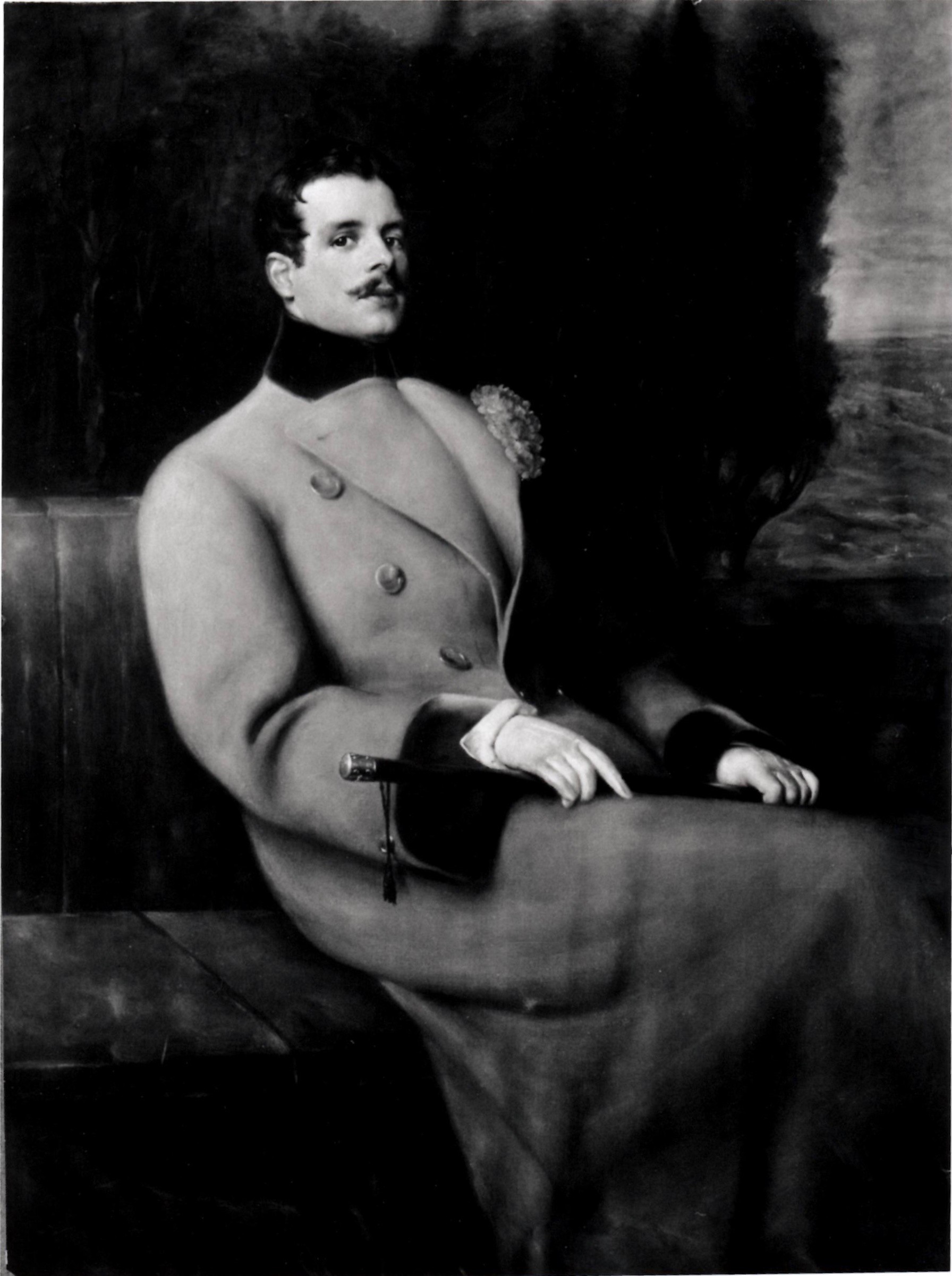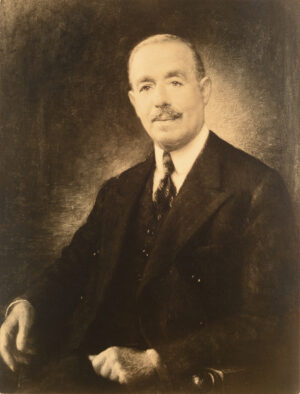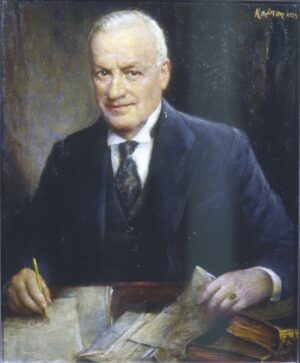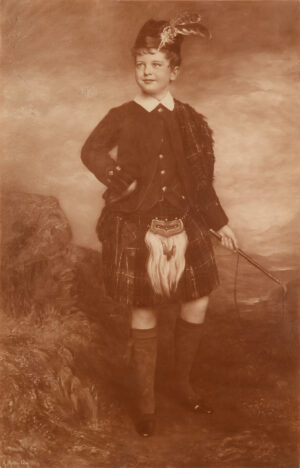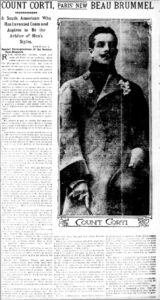
Article in the St Louis Post-Despatch (St. Louis, Missouri) Sunday, 13 October 1901.
Painted in 1901. The newspapers state that the sitter, aged 25 in 1901, was a “Swiss” millionaire whose father had made his fortune in Buenos Aires, but a Minneapolis newspaper from 1901 (not referencing Muller-Ury) calls the sitter Count Alfonso de Bernasconi Corti, and says he was in Paris establishing items of dress like the L’Aiglon coat he wears in the portrait. These facts are confirmed by the article in the St. Louis Post-Despatch, Sunday, 13 October 1901, which adds that his father, who had made his fortune in mining investments, lived on Avenue Victor Hugo in Buenos Aires and his father was of Italian ancestry.
—
Town Topics, May 2, 1901, said that they had seen the portrait and that ‘…Mr. Muller-Ury has painted this portrait con amore. The color is good and true, the pose natural and the drawing strong and correct. I should say it is the best portrait, with the exception of the late Oswald Ottendorfer, that Mr. Muller-Ury has painted.’
However, the New York Times, December 2, 1901 wrote as follows:
‘…A. Muller-Ury possesses the gift most valued by his sitters, an ability to vie with the photograph in the accuracy with which he imitates nature.
It can not be said of him, however, that he makes a portrait which stimulates the imagination or offers in itself a delight for the artistic sensibilities. He comes nearest to that in the full-length seated portrait of Mr. de Corti, in whom he has found a type that is rarely met with in the United States. The tailor-made coat – which suggests a woman’s dress underneath, the hands elegantly stiff in white gloves as they hold a gorgeous cane, the air of repose in the belief that no one could be better dressed and therefore more irresistible, give this likeness an interest the painter did not intend. If not a satire, then is this picture a proof that Mr. Muller-Ury’s sense of the ridiculous is not greatly developed.’
The L’Aiglon riding coat was probably named after a costume worn in the six-act play by Edmond Rostand of the same name which was first produced in Paris at the Théatre Sarah Bernhardt on March 15, 1900 with Bernhardt playing the leading role of the Duc de Reichstadt, the deposed Emperor Napoleon’s son, and set in 1830-32. Rostand’s previous play had been Cyrano de Bergerac, which was produced in Paris in December 1897.


